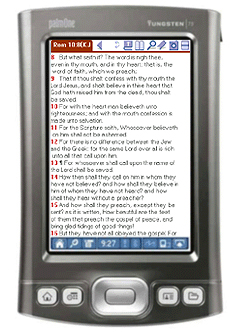 Paper might beat rock, but rocks can be fashioned into scissors.
Paper might beat rock, but rocks can be fashioned into scissors.
Often, arguments against the move to digital texts starts with the emotional attachments that we have to paper. Indeed, these attachments aren’t just emotional, they are literally interwoven into our everyday lives. From money exchanges, to recipts, to taxes, to just “jotting things down,” paper has done a marvelous job of covering up our abilities to not be able to move around information.
And yet, in this discourse, we don’t really pay attention to the fact that paper wasn’t all that great of a cover. Sure, it allows us to take oral learnings and place them into a time/listener-independent form with language and medium. But, it never really allows for the freedom of expression outside of its canvas. In a sense, you are limited by paper to expressing something that only can be interpreted by another person in one specific fashion (aka written language).
Given time and ingenuity, we’ve developed forms of media that are a step (or many) beyond paper. Each of these has their own edge, their own simplicity to the original message, and even their own capacity to become portable. There was radio, which took the canvas from wood pulp to radio waves. TV which enhanced the radio’s canvas with pictures. And so on.
And you know, we’ve not done too bad having our box full of these different tools – yet, there’s always this fear that a media format will come along that will make paper not so valuable. And heaven forbid that it would be something made out a rock.
What are mobile phones? Seriously, what makes up the mobile device? We all understand that there are radio transmitters, batteries, screens, and some means of input. Some might have speakers, cameras, and additional wireless transmitters/receivers which can push and prod more data around than we know what to do with. These are the final functions, the canvas that is a mobile device is a combination of all of the canvases of previous media (created from earth-found materials, stitched with electrons) with that paper-like element of containing an individual’s language – their personal brand if you will.
Mobiles have this unique capacity to take existing data and push it into other canvases (people, meters, web, etc.). In a respect, mobiles are like scissors. Really sharp, personal, contextual, and paradigm-shifting scissors.
If a mobile is being used like a pair of scissors, then there’s this capacity to understand that there’s come content that can be cut through and put into more size-relevant samples (mobile applications and mobile websites do this). There’s an ability to poke someone’s eye out (texting to destroy relationships, vote, or gain medical care). There are even different kinds of scissors that work better in some contexts than others (smartphones and feature phones).
In a sense, we’ve gotten to the point of creating something that can be better than paper. We’ve gone from the immobile rock, to the personal and mobile paper, to a more delicately fashioned rock, that also happens to be mobile and personal – the mobile. And if the game holds true, scissors does beat paper. Does then the argument against going mobile instead of paper (for most contexts) also fall to the same rules?
Originally posted at Blog.AntoineRJWright





 Having finished reading
Having finished reading 
